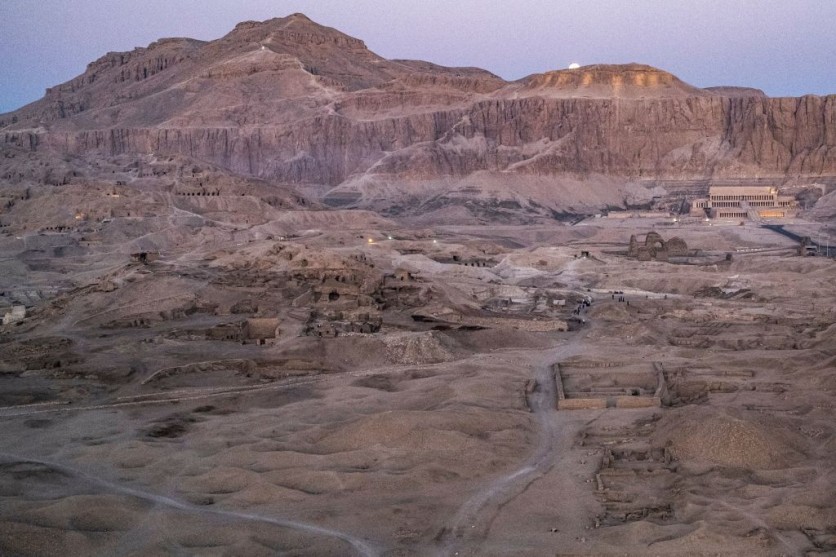The ancient Egyptian city of Tell El Fara'in (Hill of the Pharaohs) is located on the southern bank of the Butic Lake, a few kilometers north of the Butic River's east-west path. It was constructed between the Thermuthiac (Sebennytic) and Taly (Bolbitine) branches of the Nile, according to Heritage Daily.
The city was made a holy place in honor of the goddess Wadjet, who was Lower Egypt's patroness and protector before uniting with Upper Egypt to become patroness and guardian of all of Egypt.

New Finds
The ruins of an old hall with pillars inside the greater temple construction have been discovered by a team of Egyptian archaeologists during excavations across a space of 6.5 m by 4.5 m.
At the southwest corner of the temple, the hall has three remaining columns that are placed on a north-south axis.
Along with several ceramics and pottery items connected to ritual activities, the crew also discovered several stone fragments embellished with engravings.
The archaeologists also discovered a limestone painting depicting a bird's head with a white crown and feathers, according to a news release from the Ministry of Tourism and Antiquities.
Read Also : Archaeologists Discover Earliest Evidence of Cooking 780,000 Years Ago in the Jordan River
The Goddess Wadjet
Wadjet was frequently shown as a snake and was later shown coiling around Ra's skull. Tell El Fara'in was given the name Per-Wadjet by the Ancient Egyptians, and afterward Buto (also meaning Wadjet) by the Ancient Greeks as a tribute to her as a protector deity.
The city was well-known for its sacred temple and Wadjet sanctuary, with the larger temple complex occupying an area of 11 acres.
Before the unification of Pharaonic Egypt, the city of Buto, now known as "Pharaohs Hill", served as the capital of the northern kingdom. King Narmer then launched a war offensive to annex it to his southern realm and unify Egypt. This took place in 3200 BC.
British archaeologists worked in Egypt between 1928 and 1930 to excavate the location, which Sir Flinders Petrie named Beth-pelet, according to Britannica.
City levels and tombs that date from 1900 BC to roughly 1200 BC were discovered during the excavations. Numerous Chalcolithic Period (4th millennium BC) sites nearby also produced priceless prehistoric pottery and stone artifacts.
Related Article : Archaeologists Find a "Miracle" Ancient Tunnel Where Cleopatra May Have Been Buried
This article is owned by Tech Times
Written by Jace Dela Cruz
![Apple Watch Series 10 [GPS 42mm]](https://d.techtimes.com/en/full/453899/apple-watch-series-10-gps-42mm.jpg?w=184&h=103&f=9fb3c2ea2db928c663d1d2eadbcb3e52)



